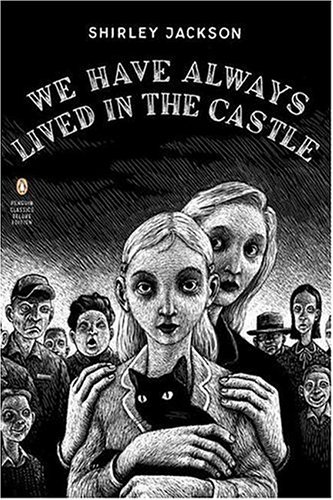
“We have always lived in the Castle” is a haunting novel written by Shirley Jackson. A sinister feeling follows you as you flip through the pages and consume the words, afraid of being poisoned by it yet strangely relishing it. Here’s the first paragraph that you encounter:
My name is Mary Katherine Blackwood. I am eighteen years old, and I live with my sister Constance. I have often thought that with any luck at all, I could have been born a werewolf, because the two middle fingers on both my hands are the same length, but I have had to be content with what I had. I dislike washing myself, and dogs, and noise. I like my sister Constance, and Richard Plantagenet, and Amanita phalloides, the death-cup mushroom. Everyone else in our family is dead.
This is a story about the Blackwood family. Sisters Mary and Constance Blackwood live in a mansion with their Uncle Julian, isolated from society. Even if this isn’t a detective story, it felt like one where you’re trying to find out the reason for their isolation and the hostility of the villagers. It makes you question the characters, if they’re hallucinating and trying to trick you into believing their tales.
It’s hard to fit this work into any genre. There’s subtle horror, drama, suspense, philosophy, and snatches of unexpected laughs. Like real life.
The most interesting character was our little Mary, Constance’s little sister. Her mind can best be described as unapologetic and pure. Here, I interpret pure as primal, unadulterated and untouched. It’s pure like the blackness of coal, not like the whiteness of snow. A part of me rejoiced as she thought her black thoughts, as if they were voicing mine. Have you ever done that, and felt ashamed after?
I disliked having a fork pointed at me and I disliked the sound of the voice never stopping; I wished he would put food on the fork and put it into his mouth and strangle himself.
Contrast this with another thought of hers:
I was wondering about my eyes; one of my eyes–-the left–-saw everything golden and yellow and orange, and the other eye saw shades of blue and grey and green; perhaps one eye was for daylight and the other was for night. If everyone in the world saw different colors from different eyes there might be a great many new colors still to be invented.
Big sister Constance is “a charming little thing, had you not known that she was arrested for murdering her family” (but was eventually acquitted of the crime, as Uncle Julian would remind us).
Uncle Julian sprinkles unexpected humor when he “entertains guests”, irreverently addressing the family murder in polite company. Confined to the wheelchair after the incident, he obsessively makes notes of the fateful day, hoping that one day he would be able to publish it. He narrates details of that day to a very interested Mrs. Wright who comes for a tea time visit. He gleefully mentions how Constance (who loves to cook for the family) was arrested for allegedly poisoning the family by adding arsenic to the bowl of sugar.
We relied upon Constance for various small delicacies which only she could provide; I am of course not referring to arsenic
The style of writing is deceptively simple, perhaps because it is told from little sister Mary’s point of view. Surprisingly engrossing, as you find yourself trapped deeper and deeper into her tarry mind. Next on my list: The Lottery and The Haunting of Hill House.
Recommended for: Gothic suspense aficionados, lovers of dark twisty stories.
Rating: 8.3/ 10
I have heard so much about this author and really want to check her out! Have you read any others of hers and if so which would you recommend? Bronte
LikeLiked by 1 person
Castle was the first book I’d read. Just finished reading “The Lottery” which is a short story with a sinister premise. Haven’t read the others yet, but “We have always lived in the castle” tops my (very short) list 🙂
LikeLiked by 1 person
Ooh great, I will check it out!
LikeLike